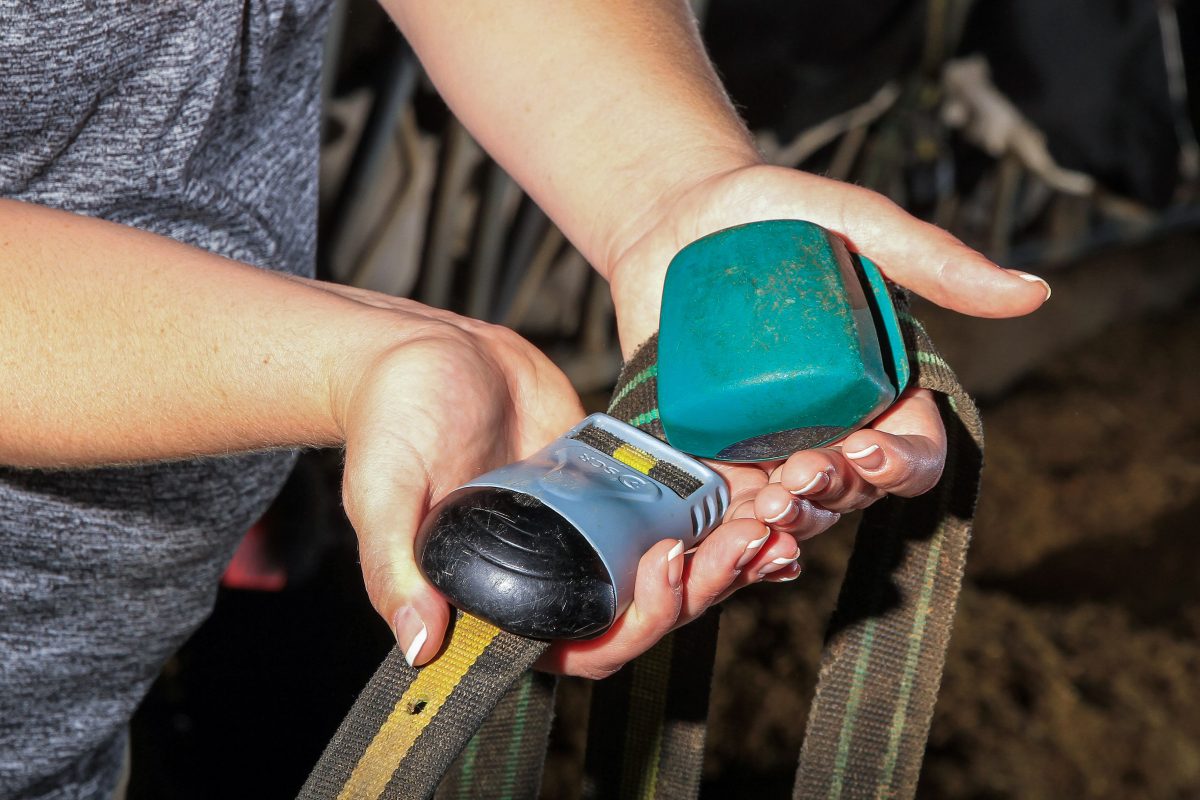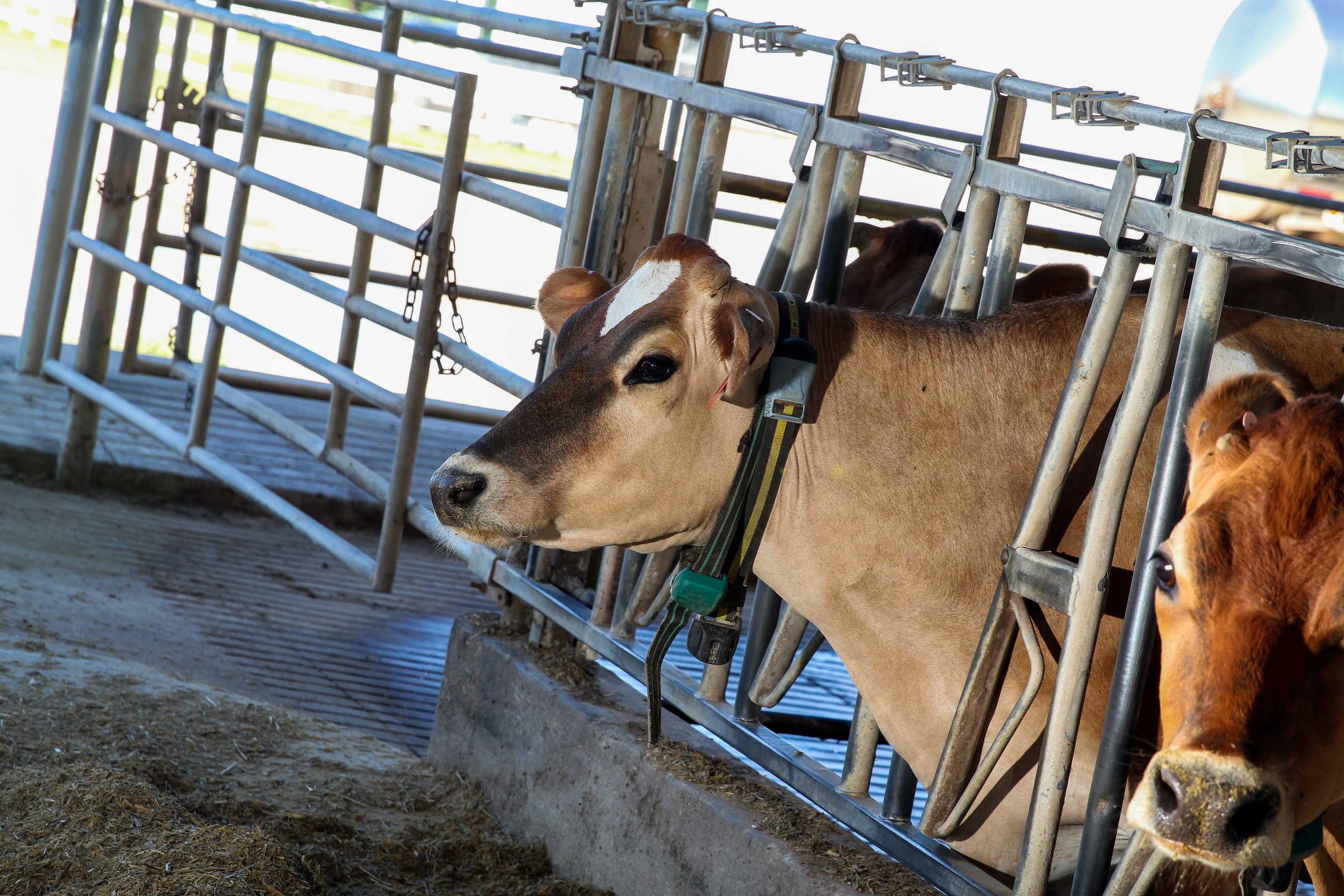Researchers at Tarleton State University have started using wearable devices similar to Fitbits to track and care for their cows.
The devices are much like the Fitbits seen on wrists, only these are specifically designed to fit the bodies of cows. They are put on the cows’ necks or legs and have the ability to track certain movements so farmers can easily identify what each cow is doing. This allows the farmers and producers to keep up with the health of the animals and determine if they are able to breed. Researchers hope that as the number of cows in the herds grow, the Fitbits can help producers keep an eye on all of them more easily.
Barbara Jones, assistant professor at the Department of Animal Science and Veterinary Technology at Tarleton State University, said her main focus in regard to the Fitbits is determining when the female cows are able to breed.
“The best use for the technology right now is reproductive purposes,” Jones said. “Using a technology to measure when a cow comes into heat, meaning that she’s susceptible to be bred, that has been the best experience.”
Cows’ behavior is key in getting them the help they need, so Jones said getting the data from the Fitbits can ensure that the cows are being looked after.
“Our second Fitbit is one that records their activity, and so we can use that for reproduction purposes, but it also actually records their rumination and their eating time,” Jones said. “We can use that feature for health, so if they have a decrease in rumination time or eating time, we might know that they are unhealthy.”
Juan M. Piñeiro, assistant professor and dairy extension specialist for the Texas A&M AgriLife Research and Extension Center, said the technology makes it easier for producers to manage their herd.
“They will summarize that information in a software that the dairy producers or the employees will be able to see on the computer,” Piñeiro said. “Basically what they see is the more user friendly version of the information. There are algorithms that let them know if they need to take action.”
The area in which Piñeiro uses these Fitbits is a transition period from late gestation to early lactation to investigate the association of lying time with milk production and reproductive and health performance. This time frame, he said, is very important and will determine the welfare and performance of cows throughout their whole lactation period.
Piñeiro said the Fitbits help track the lying time of the cows, so they can monitor them their transition period, and be able to determine if there is a problem.
“We saw cows that were either lying down less than nine hours a day or over 16 hours a day, two weeks prior to calving,” Piñeiro said. “They were losing a lot of body weight and that can cause disease and reduced performance.”
Sushil Paudyal, instructional assistant professor for the Department of Animal Science at A&M, said his focus in using the Fitbits is for disease detection. He said the Fitbits can be more beneficial to use in this area because it can help producers and researchers track data to diagnose the sick cows earlier, and possibly be able to treat them more efficiently.
Paudyal said one of the most common problems on dairy farms is lameness, or inability to walk normally, in the herd. Since there is some variation in the severity of this issue, it can be easier to detect lameness with the help of fitbit technology.
“Most of my research has been with subclinical diseases, so that we can track the cow, identify the cow early in the process of sickness, and we can provide a better treatment,” Paudyal said.
Jones said the best way to run a farm with this device is to use all types of data from the farm and see them as they work together. By doing this, farmers could expand their capabilities regarding the Fitbits.
“Something that I personally would like to work on is that we have all these Fitbits for cows and we’re generating all this data, but we don’t actually use most of the data in agriculture,” Jones said. “We’re just not using it to its full potential, so further down the road I would love to research that area.”
Cows wear ‘Fitbits’ as part of Tarleton State research program
October 29, 2019
Photo by Provided
Fitbits are assisting Tarleton State University researchers take care of their cows.
Donate to The Battalion
Your donation will support the student journalists of Texas A&M University - College Station. Your contribution will allow us to purchase equipment and cover our annual website hosting costs.





















